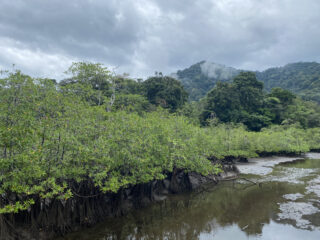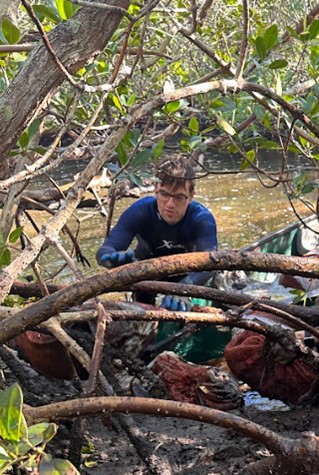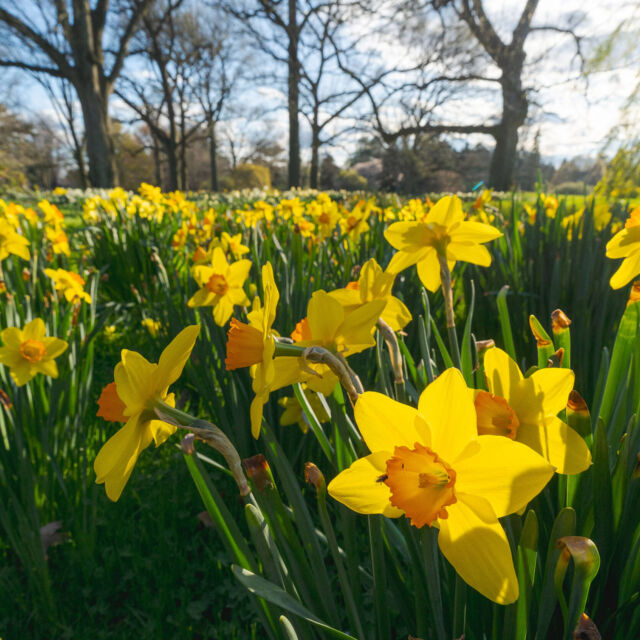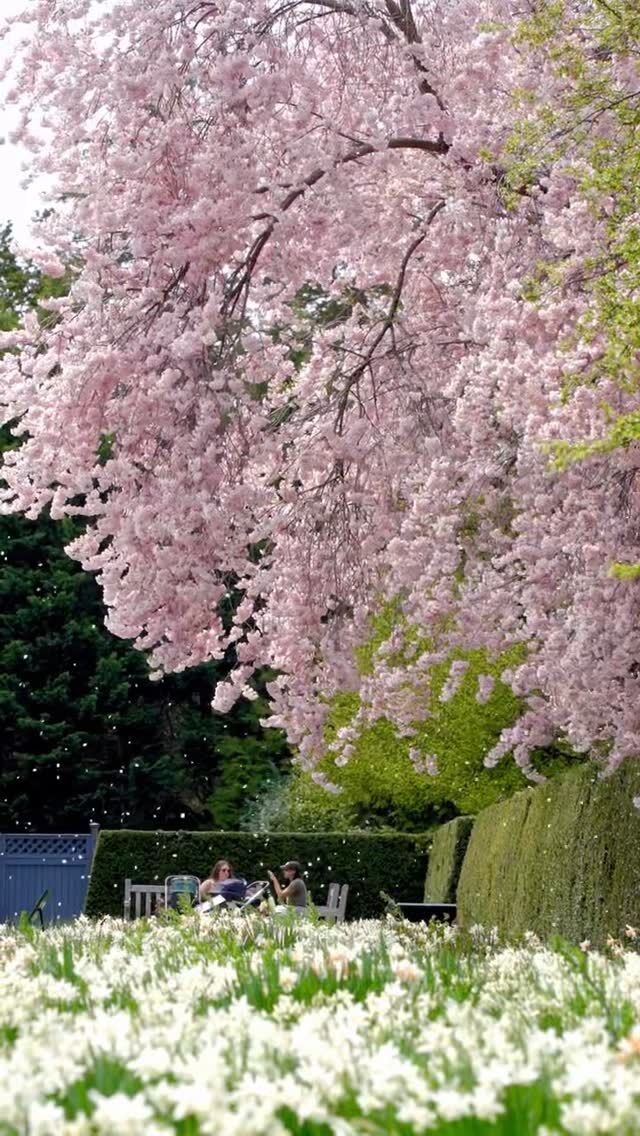Super Forests: Protecting Mangroves Protects Everyone
Brad Oberle, Ph.D., is an Associate Curator at The New York Botanical Garden. His research interests include forest ecology, carbon cycling, and conservation biology.

Only one type of forest directly connects land use to oceans: mangroves. As the only habitat where trees grow in saltwater, mangroves are unusual for many reasons.
Covering a tiny fraction of Earth’s coastlines, they contribute disproportionately to climate change resilience, among many other valuable attributes, and can play an important role in mitigating the climate crisis. That’s why conserving and restoring these threatened habitats is more important than ever.
Very few tree species (fewer than 100 globally) can tolerate combined stress from salt and flooding. Typical adaptations that remove salt and aerate roots apparently prevent mangroves from surviving frost. The hardiest mangroves can withstand only a few hours of freezing temperatures, limiting all mangrove species to tropical shores. While other tropical forests can pack thousands of species into a handful of acres, only four mangrove species grow across the entire tropics of the Western Hemisphere.
What mangroves lack in tree species diversity, they more than compensate for in terms of productivity.
Mangrove forests store more carbon per unit area than any other forest type on earth. Some carbon comes from other habitats and settles among mangroves’ filtering root systems. Productive mangroves nurture countless marine organisms, including juvenile fish that grow up to become food for millions of people. As mangrove roots proliferate, they also push soils upward to match rising seas. All of these features make mangroves supremely valuable for regulating climate, improving water quality, supporting fisheries, and protecting coastlines from storm surge. Mangroves may just be the most valuable forests on earth.

The author removing invasive tree litter from a restored mangrove in Sarasota, Florida.
Despite their tremendous value, mangroves face major threats. Millions of people live along tropical coasts, where development eliminates mangrove habitat and degrades much of what is left. While intact mangroves produce more fish over the long term, cutting them down to farm shrimp can provide badly needed revenue for coastal farmers and developing economies. Whether you live near or eat food from tropical coastlines, other choices that you make matter. Excess fertilizer that runs off from your neighborhood or farmers’ fields can pollute estuaries where mangroves grow. Carbon pollution from our homes, cars, and businesses changes climate, fuels stronger storms, and accelerates sea level rise, testing mangroves’ considerable limits. Together, threats from development, agriculture and pollution have caused dieback that exacerbates climate change and global inequality.
What can we do?
First, think globally about how your choices connect land use to oceans through mangroves. If you eat seafood, consider whether it is sustainably sourced. If you can, support efforts to protect, restore and expand mangroves, including efforts spearheaded by scientists at The New York Botanical Garden (NYBG).
For example, I led the restoration of the most extensive mangrove remaining in Florida’s Sarasota Bay, one of only 28 federally designated estuaries of national significance in the United States. My work connected community partners to replace one dominant introduced tree seedling with more than 20 species of Florida-friendly plants. On the other side of the world, NYBG’s Gregory M. Plunkett, Ph.D., Director and Curator of the Cullman Program for Molecular Systematics, and Michael J. Balick, Ph.D., Vice President for Botanical Science and Director and Senior Philecology Curator of the Institute of Economic Botany, have supported community-driven conservation in Vanuatu, a tropical island country that relies on healthy mangroves. Their work shows what makes forests and people more resilient by documenting the impacts of major typhoons.
Protecting mangroves protects everyone on Earth, from Vanuatu to Van Cortlandt Park.
Photo of mangrove by Mauricio Diazgranados, Ph.D.
SUBSCRIBE
Enter your email address to subscribe to this blog and receive updates on new posts.











